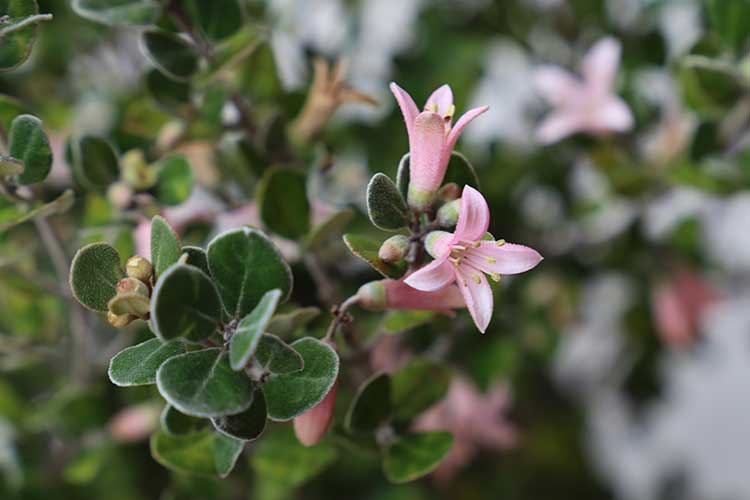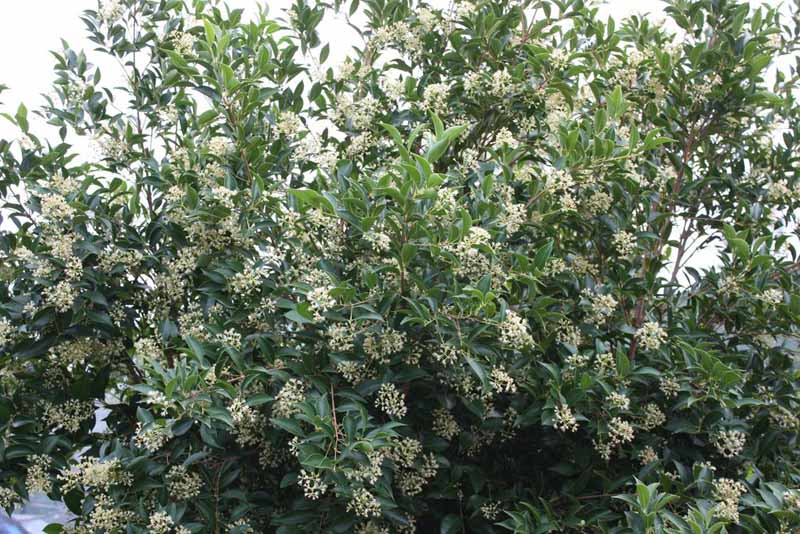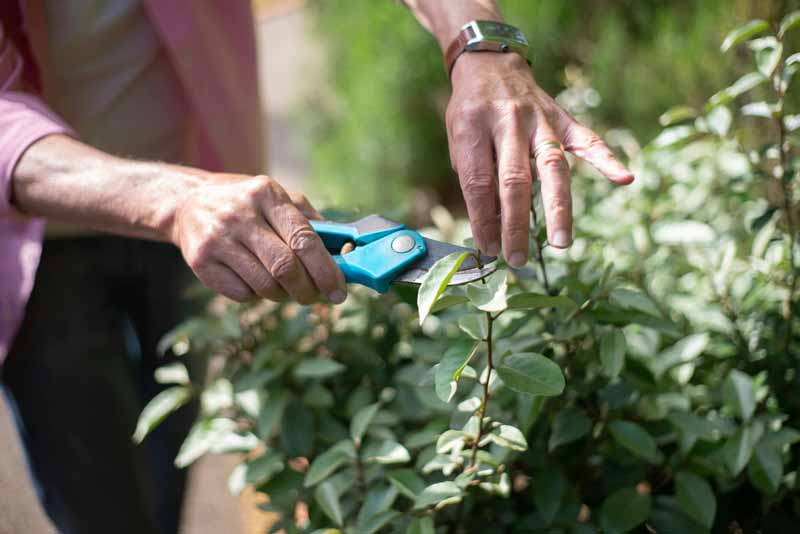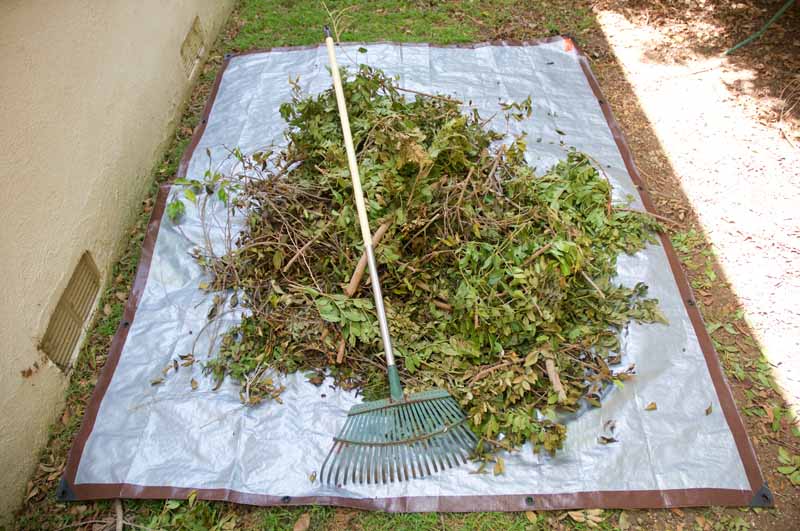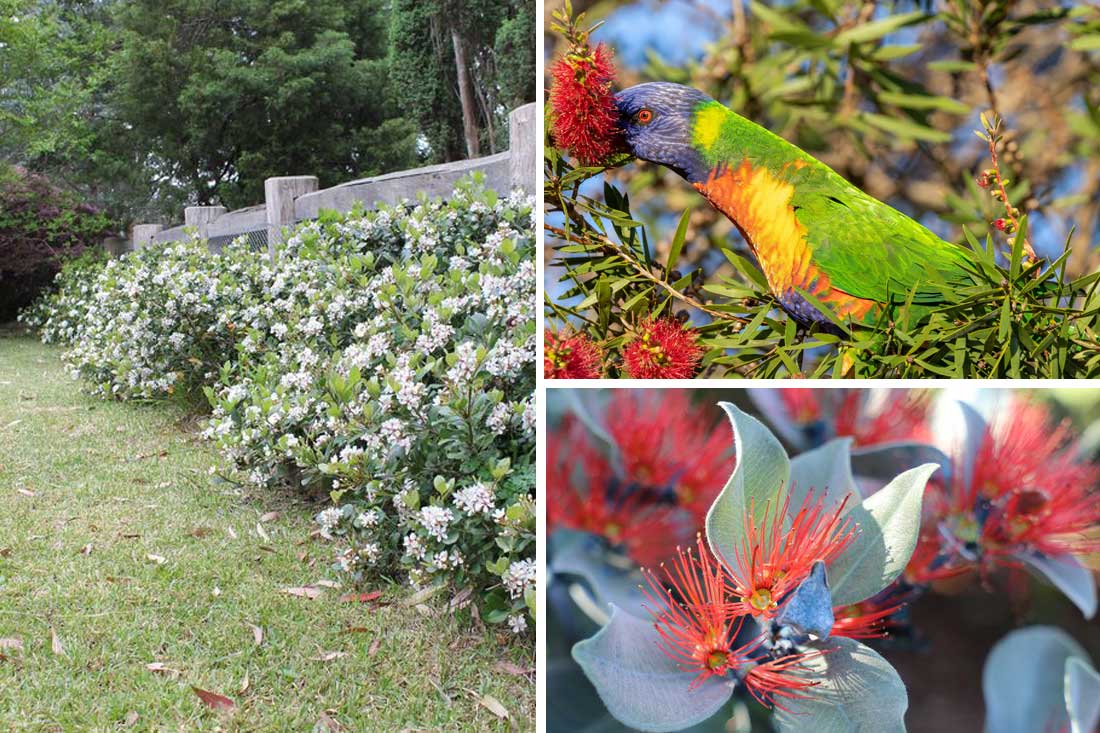Hedges are usually loved for their lush dense green nature. New foliage may be coloured as with many lily pillies or photinia, or variegated or coloured foliage such as nandina or alternathera can also be very attractive in a hedge. In these cases it is the uniformity of the hedge or the dense green nature which is so appealing. Many gardeners however are finding that when space is limited and the hedge becomes the major feature of the garden, having a hedge which flowers helps add seasonal interest and colour to that small space.
The Mock Orange (Murraya paniculata) is a very popular hedge, giving a dense and uniform green formal hedge. If left a little less formal it will be smothered in highly fragrant white flowers for much of the warm season. Be warned – it will become a small tree if left too informal.
Many hedges will flower if left to their own devices. The more tightly we clip a hedge the less chance we will ever get flowers. Flowering hedges are therefore better suited to the slightly less formal gardens.
Most shrubs can be trimmed to hedges with varying degrees of success, however not all flowering shrubs will make good flowering hedges. A naturally compact growth habit will make for a denser hedge. A slower growth rate will mean less maintenance as a hedge but for a flowering hedge will also mean you will not be constantly cutting off the flowering stems. Flowers which are bourn close the main growth of the plant rather than on extended flower stalks will also make for a neater hedge.
Another key attribute for a successful flowering hedge is that flowers should form on new growth, as flowers formed on last year’s growth (such as weigelas)will have been pruned off in keeping the hedge trimmed.
Shrubs such as plumbago and duranta can make very successful hedges however are not suitable for flowering hedges due to their rapid growth and the extended flower spikes will be constantly pruned to maintain a hedge like shape. Once left to flower they are very attractive but no longer neat enough to be called a hedge.
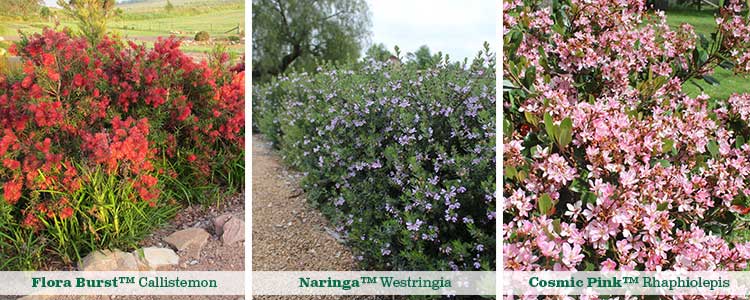
Camellias, gardenias, azaleas and hydrangeas can all make exceptionally beautiful informal flowering hedges in the right climate. These plants all have naturally dense shapes and can easily be pruned only once per year to maintain shape and maximise flowering. Autumn Royalty™ Rhododendron and Autumn Twist™ Rhododendron from the Encore Azalea range are both particularly heat tolerant and lace bug resistant azaleas which are suitable for use in warmer as well as cool climate parts of Australia, so are worth considering for hedges in warm places such as southern Queensland.
In tropical and subtropical regions similar informal hedges with dramatic flowers can be achieved using plants such as the Brazilian Red Cloak (Megaskepasma erythrochlamys), Birthday candles (Pachystachys lutea), Malabar nut (Justicia adhota) or various barlerias.
Osmanthus species and Rondeletia amoena can easily be pruned once or twice per year to form dense hedges to 2m high with the bonus of highly fragrant flowers. Abelias are often used as hedges but need to be left reasonably informal to fully appreciate the flowering. They will also need a hard prune annually to remove old growth and keep the plants fresh.
Cosmic White™ Rhaphiolepis indica ‘RAPH01’ PBR is a very hardy and compact plant which can be grown in most parts of Australia very successfully and provide an abundance of white flowers year round. It is a very reliable plant and excellent choice for a formal or informal hedge with the added bonus of flowers. Cosmic Pink™ Rhaphiolepis indica ‘RAPH02’ PBR is a lower growing plant with pink instead of white flowers. Both are very drought tolerant and pest resistant making them ideal hedges for low maintenance gardens or low water use gardens. The abundance of flowers and long flowering season makes them a highly desirable plant as a flowering hedge.
In the right climates perennial herbs such as lavender, rosemary, scented geraniums and even some varieties of basil can make beautiful scented and ornamental low hedges.
There are also excellent options for native flowering hedges. Many varieties of westringia form very impressive and tight low growing hedges which can be kept very tightly clipped for a formal effect similar to box hedges or be left to their natural compact shape, complete with lovely flowers. Ozbreed Aussie Box® Westringia ‘WES02’ PBR and Naringa™ Westringia ‘WES01’ PBR are excellent varieties for compact growth and free flowering.
There are also varieties of Callistemon which have been selectively bred to be superb hedges with compact growth and abundant flowering. Flora Burst™ Callistemon viminalis ‘CC06’ PBR is one of the best native flowering hedge plants and is hardy in most areas of Australia. The masses of vibrant red flowers put on a show stopping display throughout much of the year while providing dense screening to 2m tall. Slim™ Callistemon viminalis ‘CV01’ PBR is another ideal native for a taller flowering hedge. Slim™ will grow to 3m but has a narrow growth habit making it suitable for narrow planting spaces. It will also be covered in bright red bottle brush flowers and is myrtle rust resistant making it low care as well as an attractive plant.
Coastal Pink™ Correa alba ‘COR10’ PBR is another native which will make a dense screening plant up to 2m with pretty pink bird attracting flowers.
There are many other flowering shrubs which also make wonderful semi-formal or informal hedges. A little creativity within your garden design will allow your hedges to not only provide privacy and screening, but also flower colour, perfume and attract birds, bees and butterflies to your garden.
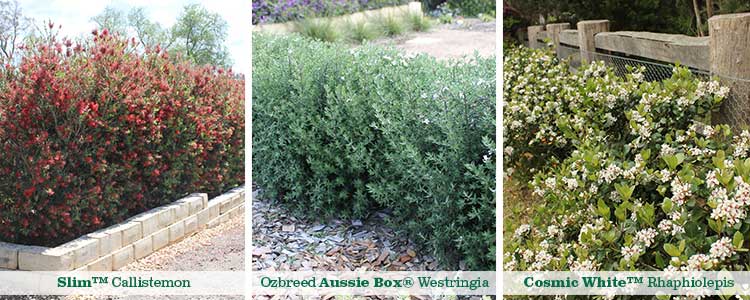
*Article published by Kate Wall

